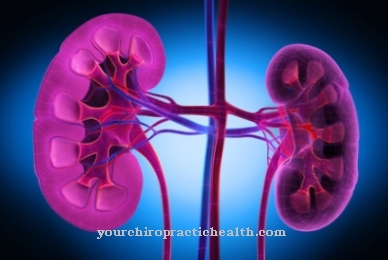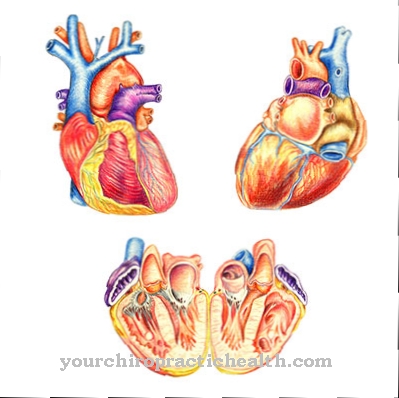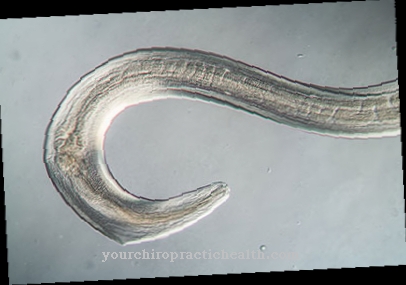The medical branch of Reproductive medicine exists since the 1980s and deals with research, diagnosis and therapy of fertility. In-vitro and in-vito fertilization are among the most important areas of reproductive medicine. In the area of research, reproductive medicine also deals with the analysis of social and ethical consequences.
What is reproductive medicine?

Reproductive medicine deals with the research, diagnosis and treatment of processes of reproduction. In this regard, the main focus of the medical specialty is on fertility disorders. The expression of reproduction in this context is understood as the generation of new, but largely similar individuals.
In the broadest sense, reproductive medicine is related to the sub-areas of urology, gynecology, genetics and andrology. The medical professional understands andrology to be the research of male reproductive ability. In the broadest sense, andrology corresponds to gynecology for men. The andrological pioneer Carl Schirren set up Germany's first reproductive medicine center in 1983. One of the most important areas of reproductive medicine opened up in the 1980s. It was then that Steptoe and Edwards developed in vitro fertilization.
This artificial insemination gave birth to the country's first "test tube baby" in Germany during the 1980s. The artificial insemination processes have since been continuously refined and further developed. The framework of reproductive medicine is largely determined by German law and bioethics. In connection with artificial insemination, ethical and legal issues have always arisen. It is precisely these controversial issues that need to be permanently clarified by reproductive medicine in terms of medical law and bioethics.
Treatments & therapies
Reproductive medicine is primarily concerned with in vivo and in vitro fertilization. The spectrum of treatment ranges from the therapy of certain fertility disorders to the induction of assisted pregnancies in the case of infertility. Both in vivo and in vitro fertilization belong to the sub-area of so-called assisted reproduction.
The focus of this assisted reproduction is the generation of a pregnancy through various medical techniques. These techniques include hormonal treatments as well as surgical or minimally invasive interventions. In vivo fertilization processes fertilize the egg cell in the womb. The methods of in vitro fertilization, on the other hand, relate to artificial insemination in a test tube. In the area of research, reproductive medicine is particularly concerned with the further development of the processes for in vitro and in vivo fertilization. The diagnostic methods for diagnosing infertility are also constantly being further developed in the research area.
Apart from that, research in reproductive medicine examines innovative methods of contraception, such as hormonal contraception. In addition, the analysis of environmental influences in connection with general fertility is an important research area of the department. The social and ethical effects of new reproductive medicine procedures are also recorded and analyzed in the reproductive medicine research area. This applies, for example, to the question of the extent to which the planning of young talent, which is already possible to a limited extent, is ethically responsible based on selected features.
In the broadest sense, reproductive medicine is also concerned with stem cell research. For example, embryonic stem cells are largely obtained from in vitro fertilization. In this area, reproductive medicine is bound by the legal requirements for stem cell research. In the field of fertilization, compliance with the Embryo Protection Act is one of the most important framework conditions for the development of new therapeutic and fertilization methods.
Diagnosis & examination methods
As a rule, a couple or an individual seeks a reproductive medicine specialist, especially if they are unable to become pregnant. The anamnesis is a component of reproductive medicine that should not be underestimated. Usually the doctor already has an inkling of the possible causes of impaired fertility based on anamnet.
Fertility tests also fall within the range of treatments in the specialty. In men, such tests usually correspond to a function test of the sperm. Masturbation can be used to obtain the sperm. However, minimally invasive procedures are also conceivable. The function of the sperm obtained and analyzed in this way is documented in a spermiogram. Above all, this semen analysis provides information on the density, speed and general health of the sperm. Reproductive medicine may use hormone tests to examine a woman's fertility. In addition, laparoscopy, endoscopy and ultrasound examinations or observation of the cycle are conceivable diagnostic procedures.
The most important methods in the therapeutic area of reproductive medicine are intrauterine insemination, intracytoplasmic sperm injection and testicular sperm extraction. In addition, microsurgical, epididymal sperm aspiration and in vitro maturation are now of great importance in reproductive medicine therapy. In intrauterine insemination, sperm are introduced directly into the woman's uterus. This procedure is particularly useful when the flow rate of the sperm is impaired.
Intracytoplasmic sperm injection goes one step further. The man's sperm are injected into the cytoplasm of the female egg. To obtain sperm, a testicular biopsy is used in the testicular sperm extraction. For in-vitro procedures, however, the sperm can also be obtained from the epididymis via microsurgical, epididymal sperm aspiration. In vitro maturation affects women with certain fertility disorders. In this procedure, the reproductive practitioner removes immature eggs from the woman's ovaries.
The removed egg cells are artificially ripened in the test tube until they are fertile. Many reproductive medicine procedures are predominantly hormonally controlled and are therefore accompanied by hormone therapy. The fulfillment of a previously unfulfilled desire to have children is the main area of all reproductive therapy measures.













.jpg)


.jpg)











.jpg)